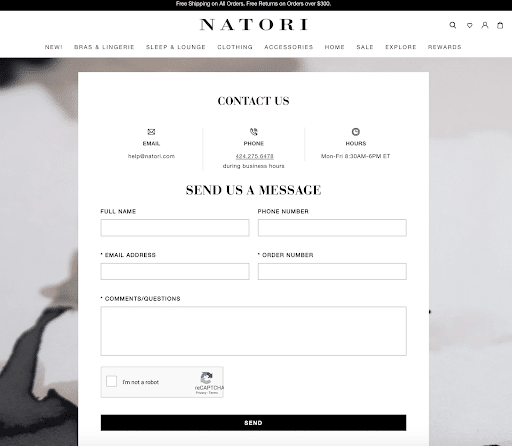It’s not difficult to create an engaging digital customer experience. Think about what your customers are looking for on your ecommerce store – whether it’s a product, instructions, reviews, or information – and make sure they can easily find it on your website. No matter who your audience is or what product you sell, these six tactics will help you to create a compelling digital experience.
1. Make customer service accessible
Greeting customers is an essential responsibility of staff in a brick-and-mortar store. Beyond letting shoppers know where to find help, that initial contact creates a connection, and the quality of that interaction can determine whether a purchase is made.
Ecommerce sites can’t initiate a human interaction with every customer that clicks on their webpage, but it is possible to let shoppers know you care through your customer service. A chatbot that pops up when entering the site recreates that initial customer greeting, and if it can answer common questions, it also lets people shop without interruption.
Live chat can answer more complex queries, and customers won’t need to fetch a phone or await an email reply before making a purchase.

Make sure it’s easy for customers to find help when they need it by making contact details easy to find. Natori, for example, has a “help” section at the bottom of their homepage that includes a contact us option. This gives customers a way to find assistance and lets them know when a reply can be expected.
2. Make personalized recommendations
One advantage that brick-and-mortar stores have over ecommerce sites is personalized attention. Well-trained sales staff can provide individual recommendations based on a person’s home office needs or camping plans.
This doesn’t mean that online stores are completely beaten in this area. There are many ways to offer personalized recommendations to online customers, from algorithms that show what other buyers purchased to a quiz about skin types that leads to cosmetic recommendations.
3. Make it easy to browse for products
For some people, shopping is more of a recreational activity than a focused task. For these shoppers, browsing through racks to see what catches their eye is part of the fun. Ecommerce sites that facilitate browsing can encourage people to stay on the site and find something to buy.
Use filters and categories so that your customers can easily find what they’re looking for. A romance reader won’t want to browse through horror novels, after all.

Education retailer, Home Science Tools, makes it easy for their customers to browse through items that may interest them. Categories including Chemistry, Biology, Earth Science, and Physics & Engineering are listed across the top of every page, and hovering over each category allows customers to narrow their search further.




